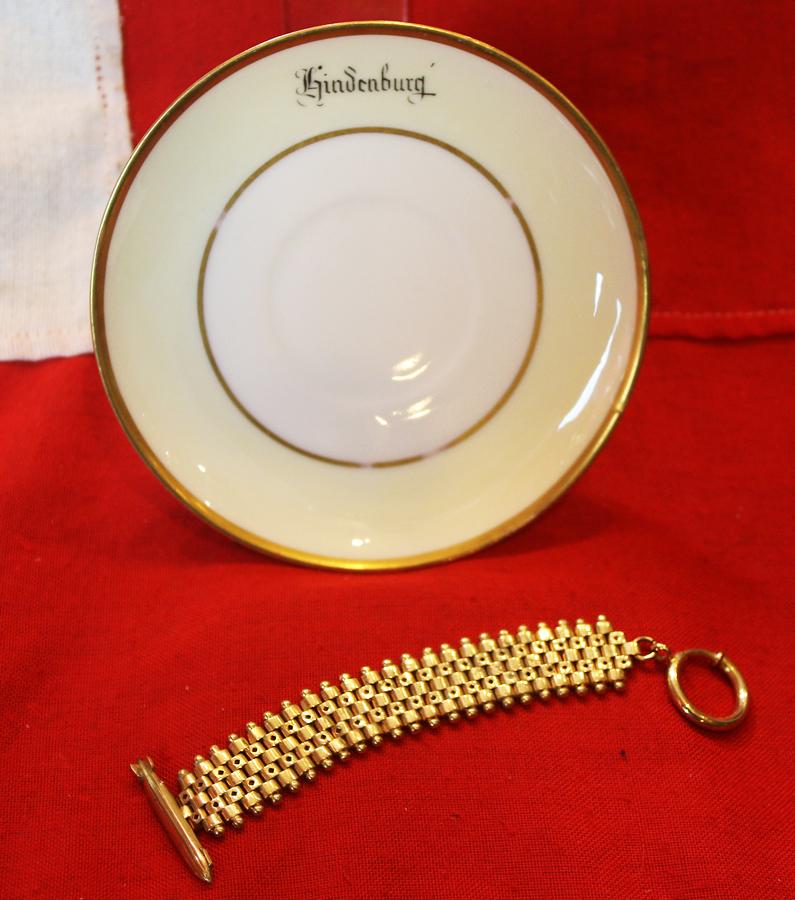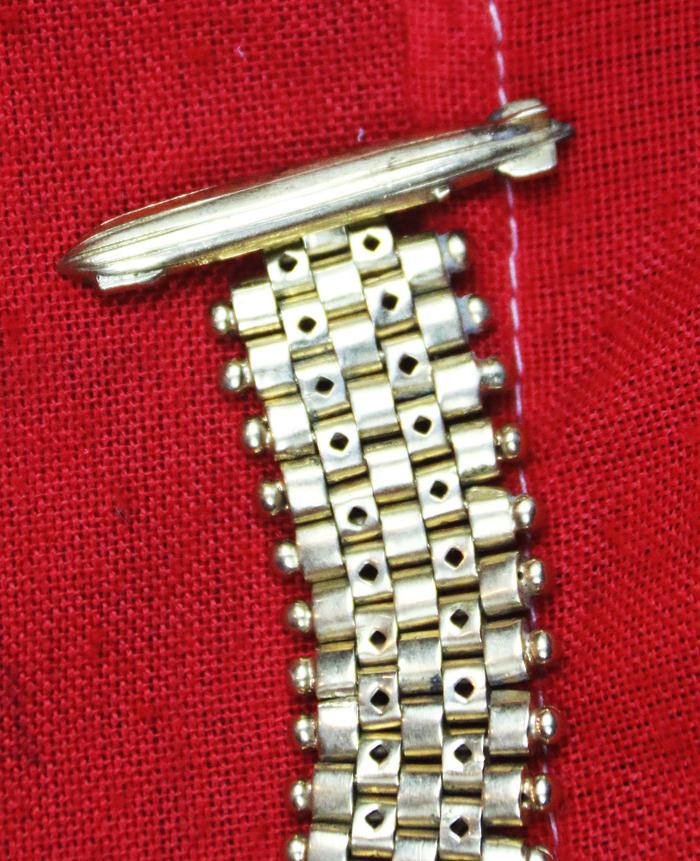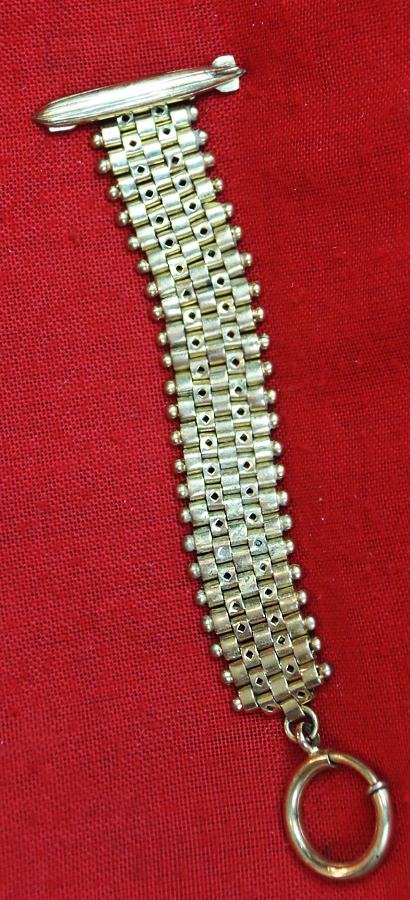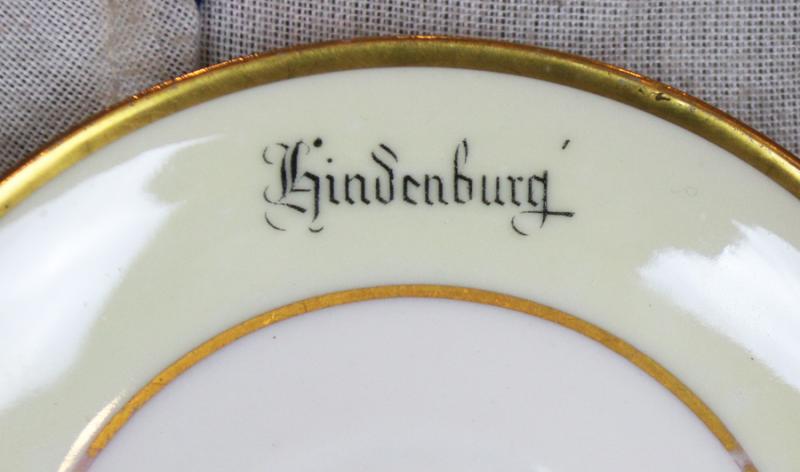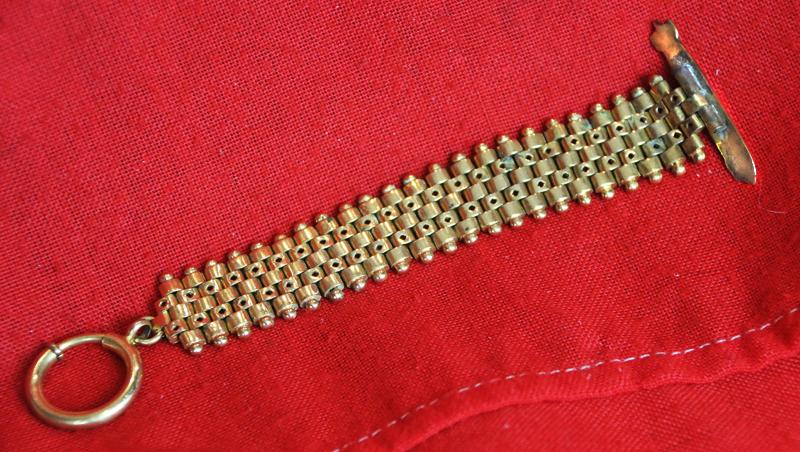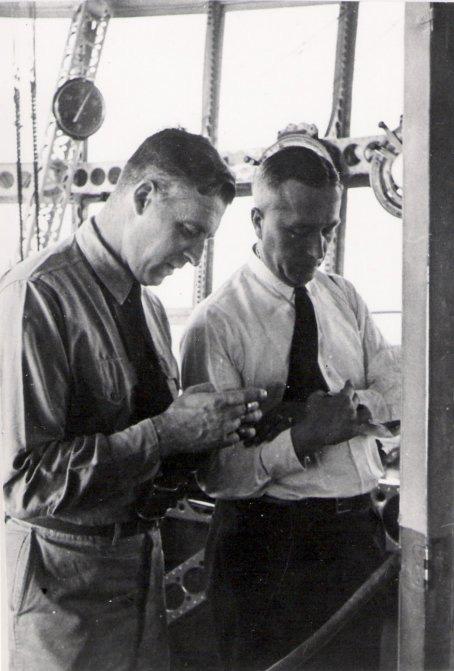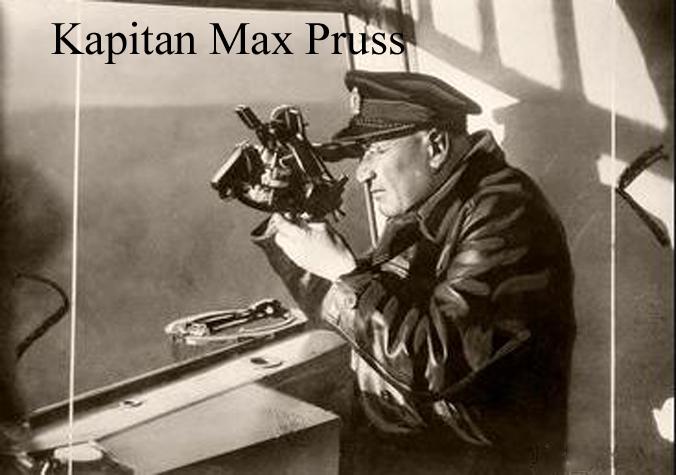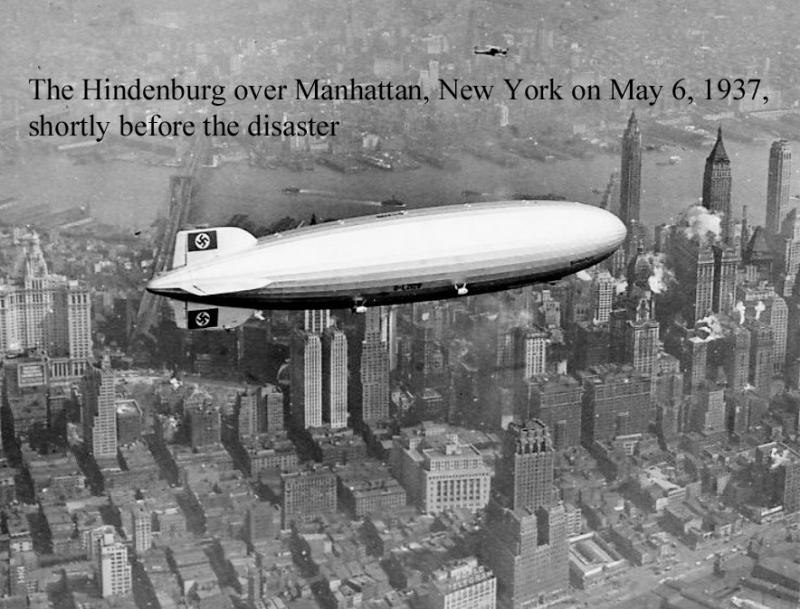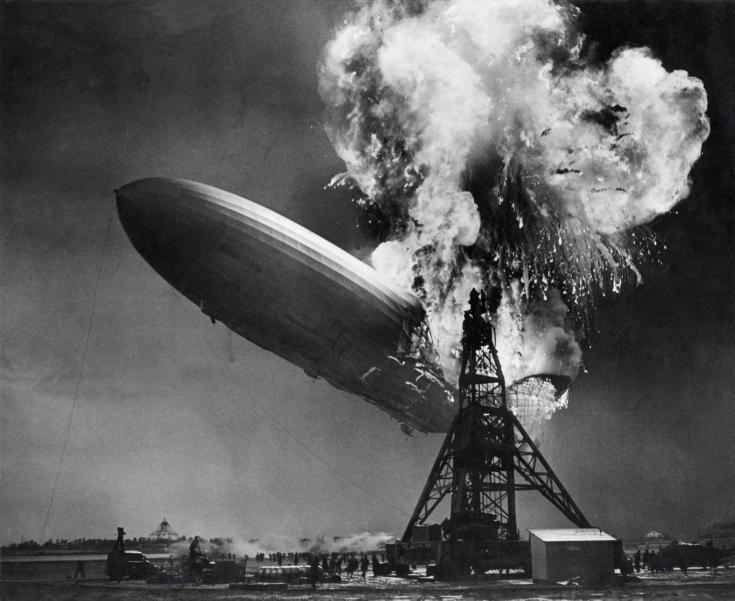Gold Metal Watch Fob, With a Zeppelin Model Top Mount Representing The Hindenburg Zeppelin, Gifted by Kapitan Max Pruss, Kapitan of the Ill Fated Zeppelin Airship LZ.129 Hindenburg. & the Hindenburg Kapitan's Saucer
Apparently given by Kapitan Max Pruss, the last Kapitan of the Hindenburg, accompanied with his boxed, original, WW2 Luftwaffe pilot's Leitz goggles, and his personal, named ‘Hindenburg’ porcelain saucer, not to be confused with the LZ standard livery porcelain, to a visiting British RAF officer in the 1950's, while he was attempting to resurrect with the post-war German government, his new Zeppelin project, with his former Hindenburg Chief Engineer, Rudolf Sauter. The fob is very heavy quality, and weighs as it should if it was solid gold, however, it bears no gold hallmark, so we cannot sell it as solid gold, and we cannot thus assume it is solid gold, therefore we offer it as ‘gold coloured metal’. The fitted Zeppelin miniature model top mount is certainly gold plate as the plate is fractionally worn in places. He Sauter worked with Captain Max Pruss, the Hindenburg's former commander, during the post-war years to try and revive the Zeppelin airships. In the early 1950s, in fact, Sauter and Pruss drew up plans for a new Zeppelin and made the case to the West German government and the press that (in Sauter's words,) "The use of Zeppelins in air traffic is absolutely economical. The West German government is planning to spend 150 million marks on a new airline flown by airplanes. We would need only 50 million marks to build new Zeppelins." Sauter showed the new Zeppelin plans to Dr. Hugo Eckener, by then in his late 80s and retired. As Eckener later told a news reporter, "I told him that he had my blessing, but that I do not want to have anything to do with it. Today, a Zeppelin would not have a chance against an airplane.". More photos of the fob and saucer to follow tomorrow. One photo in the gallery Is of Kapitan Pruss, with a fellow Kapitan Von Schiller colleague making a time check while aboard the Hindenburg.
Kapitan Pruss commanded the Zeppelin airship, Hindenburg, during its tragic explosion and destruction in Lakehurst, America. Amazingly he survived but with severe burns.
The Hindenburg disaster was an airship accident that occurred on May 6, 1937, in Manchester Township, New Jersey, United States. The German passenger airship LZ 129 Hindenburg caught fire and was destroyed during its attempt to dock with its mooring mast at Naval Air Station Lakehurst. The accident caused 35 fatalities (13 passengers and 22 crewmen) from the 97 people on board (36 passengers and 61 crewmen), and an additional fatality on the ground.
The disaster was the subject of newsreel coverage, photographs and Herbert Morrison's recorded radio eyewitness reports from the landing field, which were broadcast the next day.A variety of hypotheses have been put forward for both the cause of ignition and the initial fuel for the ensuing fire. The publicity shattered public confidence in the giant, passenger-carrying rigid airship and marked the abrupt end of the airship era.
We also have a souvenir German porcelain Hindenburg saucer from the captain’s personal porcelain set, said by Pruss to have been given to him by Hitler’s deputy, Herman Goring, however, if so, this must have been before the dramatic argument and falling out between Goring and Pruss at Frankfurt Airport in 1940.
Pruss was the commander of the airship during the Hindenburg disaster of 6 May 1937. This was his first time commanding a trip to Lakehurst. Pruss and several crew members rode the Hindenburg down to the ground as it burned, then ordered everybody out. He carried radio operator Willy Speck out of the wreckage, then looked for survivors until rescuers were forced to restrain him. Pruss, however, suffered extensive burns and had to be taken out by ambulance to Paul Kimball Hospital in Lakewood. The burns were so extensive that he was given last rites, but although his face was disfigured for the rest of his life, his condition improved over the next few months. Pruss was unable to testify at investigative committees, but officially he was not held responsible.
Pruss, along with other airship crewmen, maintained that the disaster was caused by sabotage, and dismissed the possibility that it was sparked by lightning or static electricity. Although Hugo Eckener did not rule out other causes, he criticized Pruss' decision to carry out the landing in poor weather conditions, expressing his belief that sharp turns ordered by Pruss during the landing approach may have caused gas to leak, which could have been ignited by static electricity. Pruss insisted that such turns were normal procedure, and that the stern heaviness experienced during the approach was normal due to rainwater being displaced at the tail.
Apparently Kapt. Pruss was exceptionally polite, and the exchange of gifts was most warmly given and received.
Code: 24145
995.00 GBP

